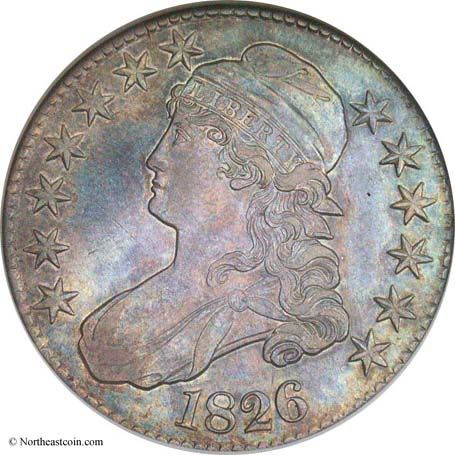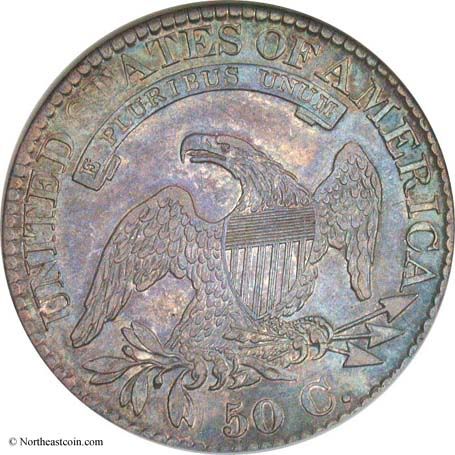Options
Saw this BEAUTIFUL 1826 Bust Half on NEN - How does this type of toning happen?
 drddm
Posts: 5,402 ✭✭✭✭✭
drddm
Posts: 5,402 ✭✭✭✭✭
Beautiful 1826 Bustie - ANACS AU-55!!! Could this toning be natural on a Bust Half?




0
Comments
How does that work?
In the case of the photo above, I'm not sure if that's 100% orig toning or not. But I'd lean towards it being orig. A nice looking coin in any event that is worthy of a premium compared to a conserved specimen.
roadrunner
<< <i>Any chance this coin would cross over into a PCGS slab? >>
On a coin like this it would all depend on how much luster is left--would need to see it in hand
There is a chance. It looks like a solid AU but I have no idea if PCGS would find some issue with the toning.
I'm more used to the look of the following coin. In hand it is a bit more grey than in the photo. PCGS felt it was XF material and certified it:
Looks like Classic “Wayte Raymond Toning” to me...
Currently Listed: Nothing
Take Care, Dave
Experience the World through Numismatics...it's more than you can imagine.
I get the impression the coin you showed is the same way,probably looks plain brown straight on,then the colors show when tilted just right.
I agree with the consensus here that the way it was stored for a long time caused the toning,looks good to me.I like it.
It looks to be flooded with light to bring out those colors. I think
it will be a little darker in hand and probably more appealing in my opinion.
I also believe this is clearly secondary toning after a dip but acceptable as
such.
As far as the PCGS MS64 shown above (as well as the OP's ANACS AU55), I have long since learned not to opine too strongly based solely on images. Images can make natural toning look extremely unnatural, and vice versa. Best to see the coin in hand before finalizing a judgment.
Best,
Sunnywood
Sunnywood's Rainbow-Toned Morgans (Retired)
Sunnywood's Barber Quarters (Retired)